Dynamic Mic Vs Condenser: Choosing the Right Microphone
At TYX Studios we choose microphones by source, room, and technique, not capsule alone. Condensers capture detail yet expose room tone and need power, dynamics control spill and suit loud or imperfect spaces. This guide gives the quick rule, when to break it, plus scenarios, key specs, and placement tips.
Most vocals and acoustic instruments sound clearer on a condenser in a treated room, while loud sources and noisy or untreated spaces usually favour a dynamic that controls spill.
This guidance comes from day-to-day sessions in our London recoding studios and a varied, well-maintained mic locker. We do not take compensation for any models mentioned or shown, and we keep claims measurable and current.
When it comes to microphones, there is no one-size-fits-all. Choose by source, room, and technique, then match polar pattern and placement. When in doubt, test both types on your actual voice or instrument.
What Is a dynamic microphone?

Dynamic microphones are a staple microphone types choice for stages and project studios alike. They’re rugged, reliable, and excel with high sound pressure levels (SPL), making them a go-to for guitar cabs, snares, and energetic singers in noisy environments.
If you’re weighing dynamic mic vs condenser for your first purchase, think of dynamics as the tough, focused tools that prioritise isolation and consistency over hyper-detail.
How a dynamic mic works
Moving-Coil/electromagnetic induction
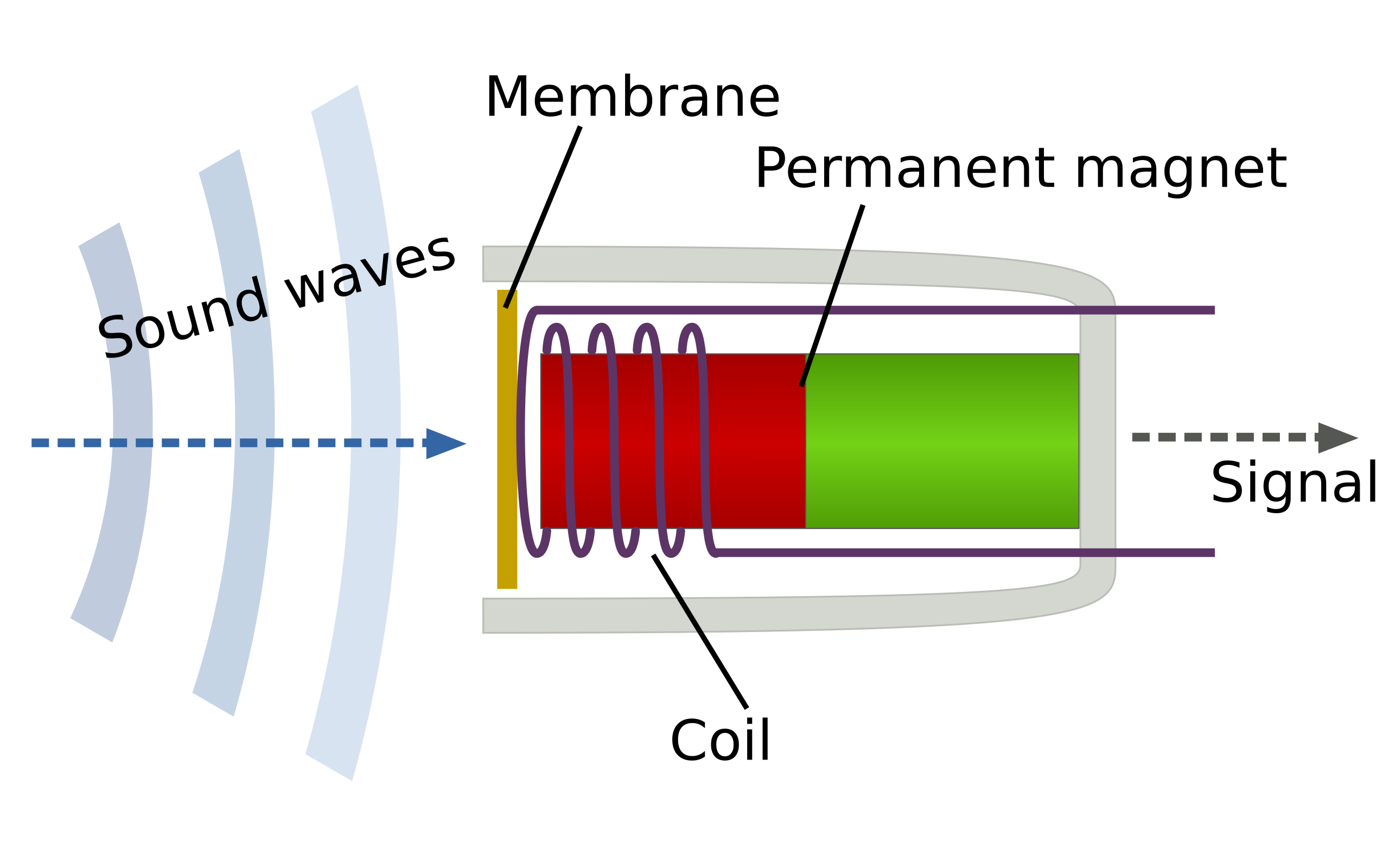
Dynamic mics (often called moving coil microphones) capture sound using electromagnetic induction. When sound waves hit a thin membrane (the diaphragm), it moves a small coil suspended in a magnetic field.
That movement converts sound into an electrical signal; an audio signal you can send to an audio interface, recording device, or mixing desk.
Because the design is passive, dynamic mics do not require phantom power (no external power or external power source needed).
Core characteristics
Sensitivity, noise rejection, durability, SPL handling
Sensitivity & isolation: Compared with condenser microphones (and condenser mics), dynamics have lower sensitivity and a tighter pickup of the sound source, which helps prevent unwanted background noise in a tricky recording environment.
Polar pattern control: A cardioid (or supercardioid) polar pattern (often tuned for a smooth cardioid frequency response) keeps the focus on what’s in front and rejects spill from the sides and rear.
Durability: Built for the road, dynamic mics shrug off drops and handling noise'; ideal for frequent setup/tear-down.
High SPL handling: They’re made for loud sounds and high sound pressure levels without distorting, so close-miking amps and drums is straightforward.
Frequency response: Many models are voiced with a presence lift for vocals and a controlled low end, offering a practical frequency response that works in real-world spaces, even if a condenser may deliver finer “air” in a professional studio.
Typical use cases
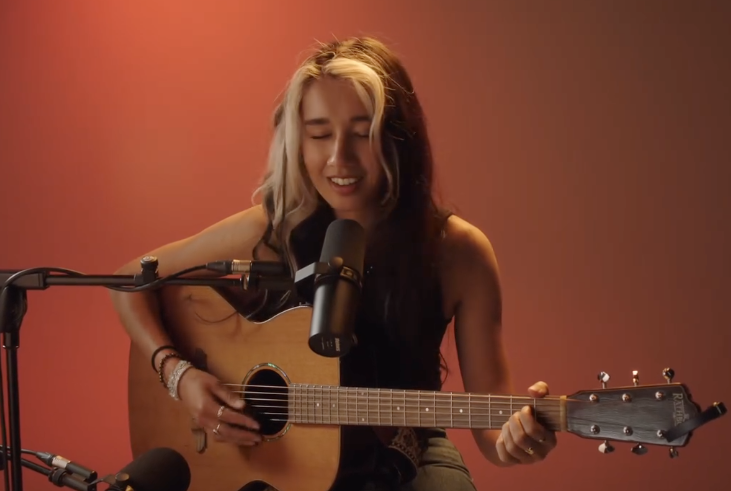
Live vocals, guitar amps, drums, untreated / noisy rooms
- Live vocals / recording vocals: A great first choice when you need strong rejection of background noise and predictable tone on stage or at home.
- Guitar amps: Point-and-go on guitar amps; push the speaker, the mic keeps up.
- Drum kits: Close-mike snares/toms; dynamics take the hit and keep shaping transients.
- Untreated rooms: In less-than-ideal spaces, dynamics help contain reflections and room rumble better than many condensers.
- Other instruments: Brass, percussion, and aggressive sources that benefit from controlled proximity and spill rejection.
What Is a condenser microphone?
%20copy.jpg)
Condenser microphones are precision tools for studio recording, prized for high sensitivity, extended frequency response, and low self-noise. In controlled studio settings, condenser mics reveal nuance, space, and articulation that dynamic microphones can underplay.
If you’re deciding on a dynamic or condenser mic, think of condensers as the detail-forward option that excels when the recording environment is quiet and well treated.
How a condenser works
Capacitor, phantom power / electret variants
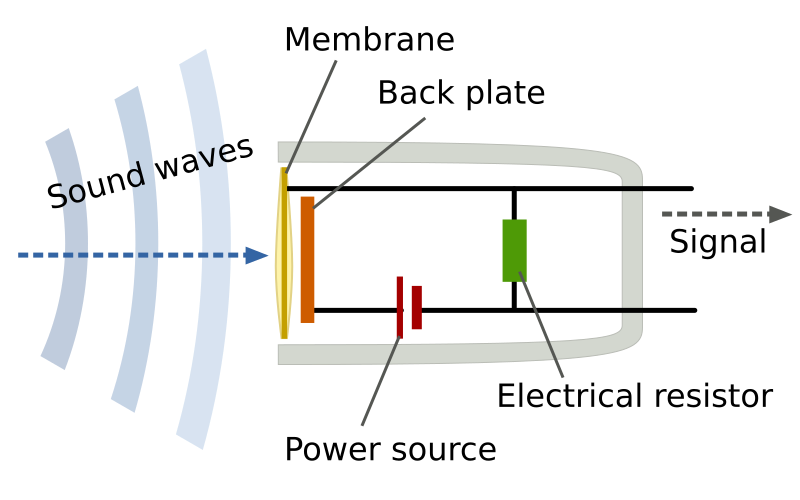
Condenser microphones are also called capacitor microphones because the capsule is a tiny capacitor made of a thin membrane facing a solid metal plate. When sound waves hit the membrane, the distance between the diaphragm and plate changes, varying capacitance and creating an electrical signal.
A quick summary of how a condenser microphone works: the capsule’s minute voltage is buffered by an impedance converter, then sent as an audio signal to your audio interface, recording device, or mixing desk.
Most condenser mics require phantom power from an external power source or external power supply to run the impedance converter. Electret designs pre-charge the capsule, but many still require phantom power for the onboard electronics. Unlike moving coil microphones, there’s no coil or magnetic field in the capsule, which is why condensers are lighter and more responsive to small changes in sound pressure.
Core characteristics
Detail, frequency response, self-noise, handling noise
Sensitivity and detail: Condenser microphones and condenser mics offer high sensitivity, capturing fine transients and room cues that elevate sound quality and produce high quality sound in a professional studio.
Frequency response: Expect a wide frequency response with extended highs; large diaphragm condensers may add flattering warmth, while small diaphragm condenser microphones favour accuracy and off-axis consistency.
Self-noise: Quality models exhibit very low self-noise; budget options vary, which can matter for voiceover or quiet acoustic instruments.
Handling/operational noise: Higher sensitivity means more handling noise and more background noise from the room, so careful mounting and a controlled recording environment are essential.
Polar pattern options: Fixed cardioid is common, but multi-pattern models offer omni and figure-8 to capture from both the front and rear; voicing and cardioid frequency response vary by design.
Typical Use Cases
Studio vocals, acoustic instruments, VO/broadcast
%20(1).jpg)
- Studio vocals / recording vocals: Large diaphragm microphones deliver presence and intimacy for singers and spoken word in studio recording and VO/broadcast.
- Acoustic instruments: Small diaphragm condensers shine on acoustic guitars, stringed instruments, drum overheads, and brass instruments where articulation and stereo imaging matter.
- Room and ambience: When the space sounds good, condensers capture sound with depth; in noisy environments, they can reveal unwanted background noise.
- Location and media: Shotgun mics (a specialised condenser family) focus on a sound source at distance, useful for dialogue and other instruments when isolation is needed.
- Versatility: With the right polar pattern, both condenser and dynamic approaches can work, but condensers excel when you want a wide frequency response and natural transients.
Dynamic vs condenser microphones: Key differences
Sensitivity & detail vs noise rejection
Condenser microphones are more sensitive. They reveal transients, room tone, and small dynamics that help vocals and acoustic instruments feel three-dimensional in studio recording.
Dynamic microphones focus on the main sound source and naturally reduce spill in an imperfect recording environment.
Max SPL & headroom
Dynamics sit close to loud sources like guitar amps and drum kits without folding. Many condensers also cope with high sound pressure, but max SPL and pad options vary by model, so check the spec sheet if you work with loud sounds.
Power requirements (phantom power)
Most condenser microphones need phantom power to run the capsule’s impedance converter. Electret designs pre-charge the capsule yet often still draw phantom power for their output stage.
Dynamic microphones and moving coil microphones do not need external power, external power source, or an external power supply.
Frequency response & transient capture
Condenser mics typically offer a wide frequency response and faster transient capture that flatters voiceover, acoustic guitars, and careful studio recording. Dynamic mics lean toward a more controlled response and punch that sits easily in a mix.
Durability & handling noise
Dynamics are mechanically simple and rugged, with dependable results when setups move fast. Condensers are more delicate; treat the capsule with care and use a shock mount to minimise handling noise.
Price & connectivity (XLR vs USB)
Both types come in XLR and USB.
XLR: better preamps, growth paths, and hardware monitoring through an audio interface.
USB: quick, minimal setup for solo creators. Choose the connector for workflow first, then choose the transducer for room and source.
Which Is better for…
Studio vocals (treated room)
A large diaphragm condenser captures nuance and air when the space is quiet. Dynamic and condenser mics can both work, but a large diaphragm microphones choice is common for presence and proximity control.
Live vocals (stage/monitors)
A dynamic mic is the safer pick. Lower sensitivity and a focused polar pattern help with gain before feedback and keep the sound source upfront on busy stages.
For more guidance, read our article on the best microphones for singing.
Podcasting & streaming (quiet vs noisy rooms)
.avif)
In a quiet room, a condenser microphone sounds open and natural. In a shared or noisy environment, a dynamic mic keeps background noise lower. USB or XLR versions of both exist; pick the connection that suits your interface and monitoring.
Instruments (amps, drums, acoustic guitar, piano, horns)
Dynamics excel up close on guitar amps and drum kits. Small diaphragm condenser microphones are a go-to for acoustic guitars and piano when off-axis consistency matters; large diaphragm condensers add body on solo instruments and voice.
For brass instruments, step back with a condenser for clarity or choose a dynamic for tighter control.
Field/video & room considerations
Shotgun mics, a condenser family, give strong front-to-back discrimination for dialogue at distance. In reflective rooms, polar pattern choice and placement matter as much as mic type.
Polar patterns & room considerations
.png)
Cardioid, supercardioid, omni, figure-8
Cardioid is the everyday choice for focused pickup with side and rear rejection and a smooth cardioid frequency response.
Supercardioid narrows the front lobe for stages; place monitors in the nulls.
Omni sounds natural in a good room and avoids proximity bass build-up.
Figure-8 hears both the front and the rear and enables mid-side or face-to-face setups.
Proximity effect, plosives, and mic technique
Directional patterns increase bass as you move closer. Use distance and slight angle to taste.
A pop filter or windscreen tames plosives and keeps the audio signal clean on close speech while staying aligned with the sound source.
Buying checklist
Reviewed 15 October 2025
XLR vs USB
XLR chain: microphone → XLR cable → audio interface for clean gain, direct monitoring, and future upgrades.
USB path: microphone → computer for fast setup with fewer boxes.
Budget tiers
Starter: proven dynamics or entry condensers to learn placement and room control.
Midrange: lower self-noise condensers and broadcast-style dynamics with stronger output.
Pro: refined capsules with stable off-axis tone and premium dynamics for broadcast and stage.
Popular models to know
Dynamic microphones: Shure SM58 for live vocals; Shure SM7B or SM7dB for broadcast and voice.
Condenser microphones: Audio-Technica AT2020 for entry large diaphragm; Rode NT1 for low self-noise studio work.
Small diaphragm condensers: Shure SM81; Neumann KM184.
USB options: Blue Yeti as a multi-pattern USB condenser; Samson Q2U as a USB/XLR dynamic.
Setup and sound tips
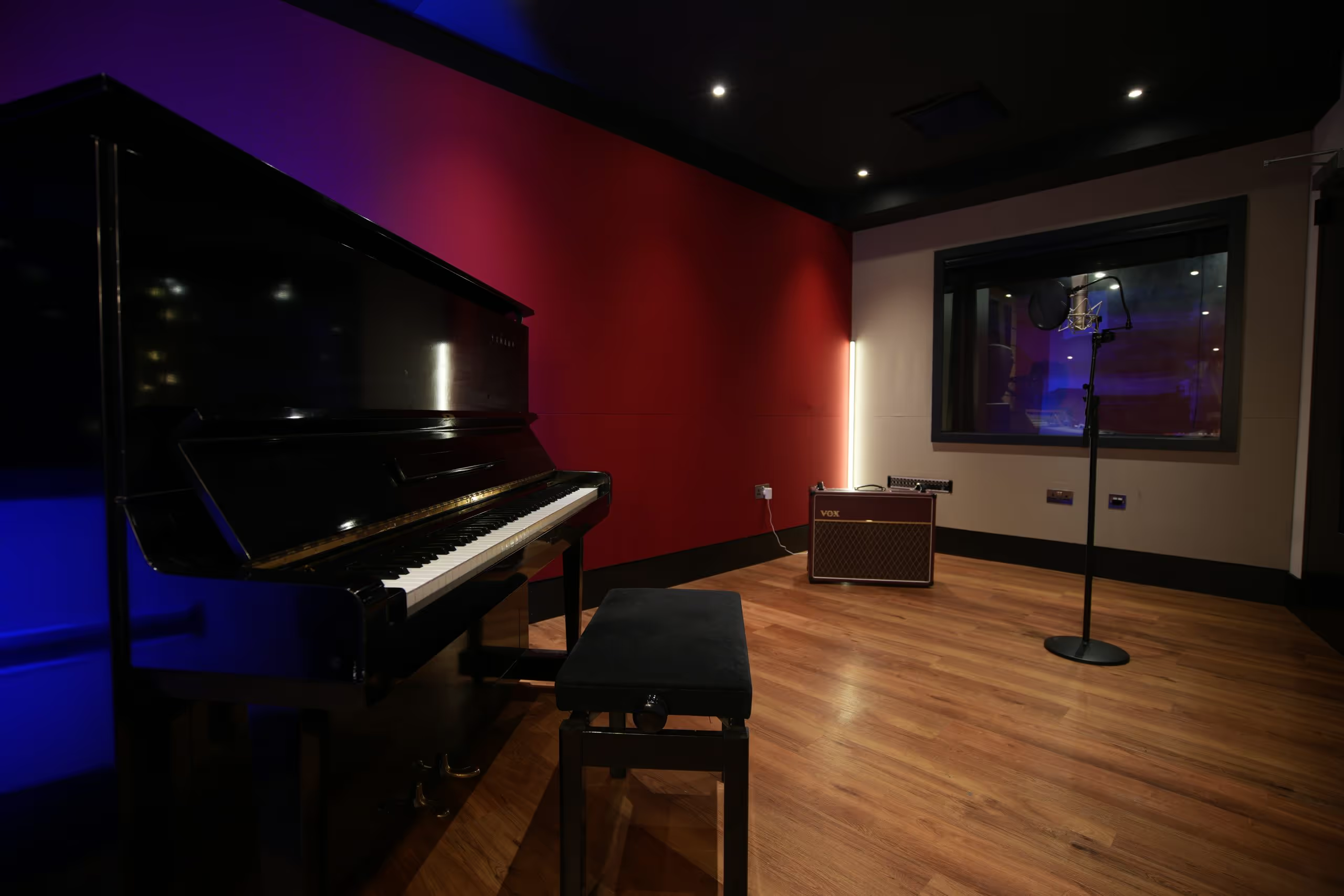
Positioning and distance
Dynamic voice: 5–10 cm with a pop filter for presence and control.
Condenser vocals: 10–20 cm with pop filter; adjust distance to balance detail and room tone.
Acoustic guitars: 20–40 cm with small diaphragm condensers near the 12th fret; fine-tune angle for brightness and pick noise.
Amps and drums: close-mike with dynamics; add a condenser for room when the space sounds good.
Gain staging & interfaces
Set healthy peaks: aim around −10 to −6 dBFS.
Use pads and filters: engage a pad on loud sources; apply a gentle high-pass to control rumble.
Manage latency: use direct monitoring or low buffers on USB setups.
Quick room-treatment wins
Treat first reflections at ear height, add a rug on hard floors, and soften the area behind the mic. These small steps lift intelligibility more than most plug-ins.
Final checklist, dynamic or condenser
Bring your sound to life at TYX Studios

Choosing the right mic is just the beginning. At TYX Recording Studios in London, we offer more than just high-end equipment we provide the space, expertise, and support to bring your creative vision to life.
Whether you're recording vocals, producing a podcast, or tracking a full band, our London studios are designed for flexibility and quality at every stage. With industry-grade gear, acoustically treated rooms, and a team that understands the creative process, TYX is where serious projects take shape.
Book a session today and experience what professional production really feels like.
Frequently Asked Questions
In a treated, quiet room a condenser usually captures more detail. In noisy or untreated rooms a dynamic often gives cleaner results.
Dynamic microphones are typically less sensitive, so they reduce room pickup and spill compared with condensers. Placement and polar pattern still matter.
Passive dynamics do not. Some active dynamics do. Phantom on balanced wiring usually does not harm a passive dynamic.
Most studio condensers need 48 V phantom power. A few run on internal batteries or other voltages. Always check the spec.
Yes. Many handle high SPL when you use a pad or add distance. Dynamics remain the simplest choice for very loud, close-miked work.
A dynamic cardioid is usually more forgiving in untreated spaces and rejects more spill. Condensers can work if the room is well controlled.
Sensitivity, self-noise, maximum SPL, and polar pattern. Also confirm you have phantom power and enough clean preamp gain.
Yes, but they are more sensitive and can feed back sooner. Dynamics are common on stage for durability and gain-before-feedback.
A transformer can raise output and set impedance. A humbucking coil helps cancel mains hum. Presence varies by model.
Often yes. Distance, angle, and polar pattern can change the result more than capsule type alone.

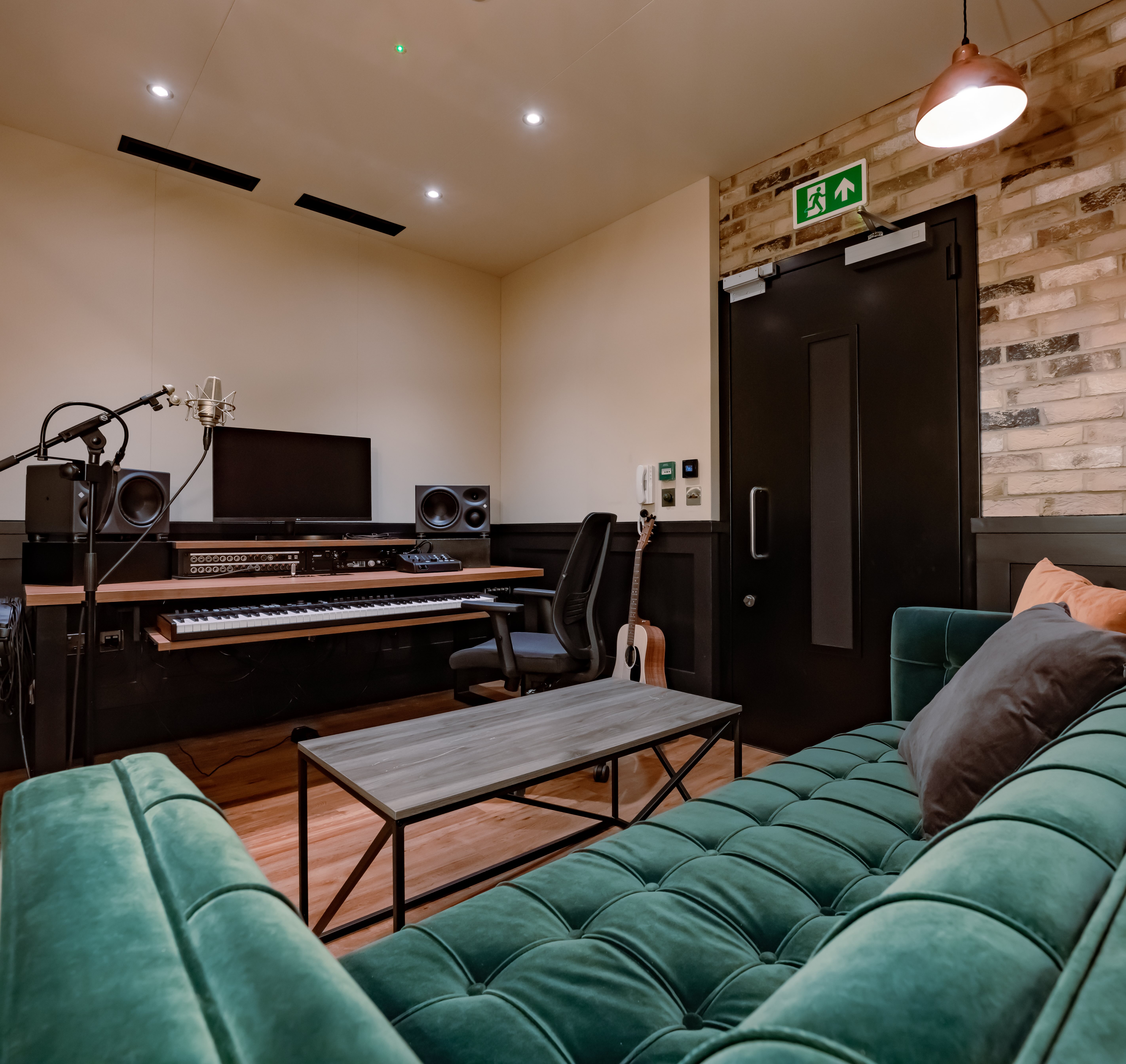













.avif)

